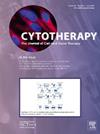推进用于脊髓损伤修复的许旺细胞移植所面临的挑战。
IF 3.7
3区 医学
Q2 BIOTECHNOLOGY & APPLIED MICROBIOLOGY
引用次数: 0
摘要
背景目的:本文旨在对许旺细胞(SC)疗法的现状以及提高其临床效用的潜在步骤进行专家综述:方法:我们根据临床前、临床和生产经验进行了专家综述:结果:许旺细胞(SCs)对周围神经再生至关重要,在脊髓损伤(SCI)后支持轴突修复方面也很有意义。SCs可从成人神经活检组织中分离并进行组织培养,也可通过特定的分化方案从前体和神经祖细胞中产生,从而扩大数量。在培养过程中,它们会发生去分化,形成类似于 "修复 "SC 的状态。除了轴突维持、髓鞘化和轴突再生外,已知的SC功能还包括免疫调节和释放具有潜在治疗作用的细胞外囊泡。最近,在 cGMP 条件下纯化的自体人 SC 培养物已在神经修复、亚急性和慢性 SCI 临床试验中进行了测试。虽然自细胞培养物支持神经再生的效果毋庸置疑,但根据研究结果显示,其对临床 SCI 的疗效有限:本综述讨论了目前在受损脊髓环境中移植 SCs 的局限性。局限性包括移植后细胞存活率有限、SCs 无法在星形胶质细胞实质内迁移,以及 SC 丰富的移植区域轴突再生受限。我们介绍了如何提高移植 SCs 的存活率和整合率,以及如何扩大 SCs(包括 SC 衍生的细胞外囊泡)的使用范围。我们还介绍了移植自体和异体 SC 的相对优势,以及内源性 SC 在脊髓修复中的作用。最后,我们简要介绍了扩大 SC 生产规模以用于商业用途所需要解决的问题。本文章由计算机程序翻译,如有差异,请以英文原文为准。
Challenges in advancing Schwann cell transplantation for spinal cord injury repair
Background Aims
In this article we aimed to provide an expert synthesis of the current status of Schwann cell (SC)therapeutics and potential steps to increase their clinical utility.
Methods
We provide an expert synthesis based on preclinical, clinical and manufacturing experience.
Results
Schwann cells (SCs) are essential for peripheral nerve regeneration and are of interest in supporting axonal repair after spinal cord injury (SCI). SCs can be isolated and cultivated in tissue culture from adult nerve biopsies or generated from precursors and neural progenitors using specific differentiation protocols leading to expanded quantities. In culture, they undergo dedifferentiation to a state similar to “repair” SCs. The known repertoire of SC functions is increasing beyond axon maintenance, myelination, and axonal regeneration to include immunologic regulation and the release of potentially therapeutic extracellular vesicles. Recently, autologous human SC cultures purified under cGMP conditions have been tested in both nerve repair and subacute and chronic SCI clinical trials. Although the effects of SCs to support nerve regeneration are indisputable, their efficacy for clinical SCI has been limited according to the outcomes examined.
Conclusions
This review discusses the current limitations of transplanted SCs within the damaged spinal cord environment. Limitations include limited post-transplant cell survival, the inability of SCs to migrate within astrocytic parenchyma, and restricted axonal regeneration out of SC-rich graft regions. We describe steps to amplify the survival and integration of transplanted SCs and to expand the repertoire of uses of SCs, including SC-derived extracellular vesicles. The relative merits of transplanting autologous versus allogeneic SCs and the role that endogenous SCs play in spinal cord repair are described. Finally, we briefly describe the issues requiring solutions to scale up SC manufacturing for commercial use.
求助全文
通过发布文献求助,成功后即可免费获取论文全文。
去求助
来源期刊

Cytotherapy
医学-生物工程与应用微生物
CiteScore
6.30
自引率
4.40%
发文量
683
审稿时长
49 days
期刊介绍:
The journal brings readers the latest developments in the fast moving field of cellular therapy in man. This includes cell therapy for cancer, immune disorders, inherited diseases, tissue repair and regenerative medicine. The journal covers the science, translational development and treatment with variety of cell types including hematopoietic stem cells, immune cells (dendritic cells, NK, cells, T cells, antigen presenting cells) mesenchymal stromal cells, adipose cells, nerve, muscle, vascular and endothelial cells, and induced pluripotential stem cells. We also welcome manuscripts on subcellular derivatives such as exosomes. A specific focus is on translational research that brings cell therapy to the clinic. Cytotherapy publishes original papers, reviews, position papers editorials, commentaries and letters to the editor. We welcome "Protocols in Cytotherapy" bringing standard operating procedure for production specific cell types for clinical use within the reach of the readership.
 求助内容:
求助内容: 应助结果提醒方式:
应助结果提醒方式:


